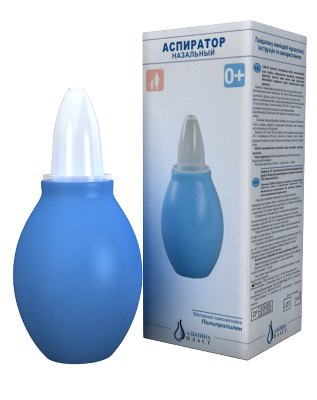A runny nose is a fairly common and common thing in people's lives. during the period of the disease. But it's a completely different matter when an adult notices bleeding from the nose. In this case, you do not need to be immediately scared, but it is worth figuring out what this is connected with, and where did the runny nose come from with bloody discharge... An adult can have a fairly large number of reasons contributing to these manifestations, from minor to signaling serious health problems.
Quick navigation through the article:
Causes of bleeding
There are quite a lot of factors contributing to the appearance of bleeding during blowing your nose. The most common are:
- avitaminosis;
- various changes in hormonal levels;
- dry air;
- not a very aesthetic habit of picking your nose;
- genetic predisposition;
- elderly age;
- drug abuse;
- pathology of the anatomy of the nose;
- various injuries to the nose;
- strong blowing of your nose, sneezing;
- cold;
- allergies, sinusitis and other diseases.
It is believed that in an adult, a runny nose with bloody discharge is most often provoked by the dry air inhaled by him. It negatively affects the blood supply system, and if a person has weakened immunity for any reason, the walls of blood vessels, as a rule, as a result of this, blood appears in the mucus blown out.
With additional load on the nasal capillaries, they are damaged
Also, dry air often provokes the appearance of blood when blowing out, and the fact that when inhaled, the nasal mucosa dries up, thereby provoking weakness (fragility) of the vessels. As a rule, in this case, no treatment is required, but simply humidify the dry air.
Violent blowing and sneezing, as well as nose picking, have the same cause for the appearance of blood in the mucus with a runny nose. This exposure or pressure on the capillaries of the nose, as a result of which they burst, provokes the appearance of blood clots. Causes dryness in the nose and such a factor as severe cold. He is able to provoke a weakening of the vessels of the nose, making them more brittle.
notethat bloody discharge from the nose can be of a different nature, and in this article it is a runny nose with bloody manifestations that is considered, and not bleeding from the nose.
During illness, allergy, vitamin deficiency, as well as when you reach old age and changes in hormonal levels, the vessels of the nasal mucosa weaken, like the human body itself. As a result, in an adult, at the slightest impact, the capillaries of the nose burst, and one can observe such a phenomenon as a runny nose with bloody discharge.
Medicines, especially those that contribute to severe vasoconstriction, are recommended to be used no more than 3 days, since their further use can cause bleeding from the nose. In addition, drugs, especially antibiotics, can cause blood thinning, which quite often provokes the appearance of blood from the nose.
It is important to knowthat long-term use of nasal drops no less often provokes damage and fragility of small nasal capillaries. Nasal abnormalities that cause blood in the secreted mucus are usually caused by congenital or acquired factors. Blood in the mucus in this case appears due to the fact that, as a result of negative effects on the capillaries of the nose, their walls are thinner, which is due to the physiological structure of a person. In this connection, their more frequent vulnerability is caused.
One of the rarest, but most dangerous factors that can provoke the presence of blood in the mucus secreted from the nose is the factor of disruption of the cerebral vessels.

Long-term use of nasal drops often provokes vascular damage
Blood is especially common in the mucus secreted from the nose, with a combination of several factors. For example, dry air provokes fragility of small capillaries, and mechanical action on them, for example, blows to the area of \u200b\u200bthe nose or picking in it, completes the process of damage to the capillaries.
Symptoms of a similar cold
A runny nose with bloody discharge in an adult may vary in mucus color and viscosity, it is by these signs that one can determine the reasons for the appearance of such a cold.
The color of the secreted mucus, as a rule, has two colors - whitish and green, less often a yellowish color is found. The first symbolizes the onset of a person's disease and in this case it is often enough to rinse the nose. This will help get rid of the infection, as well as keep the capillaries of the nose in good condition and reduce the risk of damage due to ingestion. medicines, further spread of infection, etc. 
The manifestation of a yellow tint of mucus with blood in most cases symbolizes about inflammatory process in the upper respiratory tract. All other discharge symbolizes the presence of heavier infectious diseases... In these cases, often in addition to bleeding, a symptom such as nasal swelling occurs.
If a runny nose with blood develops a purulent hue and a pungent odor, this often symbolizes the presence of an allergy. Inflammation of the paranasal sinuses and nasal passages also provoke the appearance in an adult of such a manifestation as a runny nose with purulent bloody discharge. In this case, you must consult a doctor. This disease is quite dangerous and its treatment cannot be ignored.
notethat you also need to consult a doctor if bloody discharge from the nose occurs constantly and is accompanied by symptoms such as pallor of the skin, itching, headache, weakness, loss of appetite, shortness of breath and others, as they symbolize serious health problems.
How does a runny nose with bloody discharge occur?
A runny nose is a common process if an infection gets on the nasal mucosa. This is due to the fact that the human immune system is designed in such a way that when an infection enters the body, the defense system is activated and begins to fight viruses different ways, depending on where they enter the body.
So, a runny nose with bloody discharge in an adult is due to the fact that when a virus enters the nasal mucosa, the cells of the body are activated in order to remove a foreign body for them. In this connection, the volume of mucus in the nose increases, which stops the penetration of the infection deeper and tries to remove the infection from the body. And also the vessels themselves increase, as a result of which their walls become thinner and much more vulnerable.

If a runny nose with blood develops a purulent hue and a pungent odor, this often symbolizes the presence of an allergy
The appearance of a common cold, as a rule, is not worth fearing, since this is not a dangerous manifestation, but a protective reaction of the body to viruses that have penetrated from the external environment. Slight bloody streaks in the separated contents are not alarming.
But if in an adult, when blowing his nose, mucus is released along with bloody discharge, such a runny nose, unless, of course, it is caused by mechanical damage or dry air, symbolizes the presence of a disease that has already penetrated the human body, which contributed to the effect on the capillaries of the vessels, and made them more brittle.
First aid
When mucus with the presence of blood appears from the nose, it is necessary to take a horizontal position, while the head cannot be thrown back. On the contrary, it is recommended to tilt slightly forward so that blood does not enter the body. And it is better to sit with your head tilted forward as well. Put a cotton swab soaked in 3% hydrogen peroxide solution or 0.1% adrenaline in the nostril from where the blood is secreted, or use another similar remedy.
It is also allowed such a way to stop the flow of blood, how to simply hold the nose with your hand... It is recommended to apply cold to the nose area. After the blood stops, you need to pump out the mucus from the nose with an aspirator. If the blood cannot be stopped within 15–20 minutes, an ambulance should be called.
What not to do
 If an adult has a runny nose with bloody discharge, in no case should you warm up the sinuses, this is strictly prohibited, due to the fact that heating causes blood flow and discharge, instead of stopping, on the contrary, intensifies.
If an adult has a runny nose with bloody discharge, in no case should you warm up the sinuses, this is strictly prohibited, due to the fact that heating causes blood flow and discharge, instead of stopping, on the contrary, intensifies.
Also, if sneezing and blowing your nose provoke the appearance of blood in the mucus, it is necessary, if possible, to avoid these processes and temporarily use means to eliminate mucus from the nose (aspirator).
Prevention of occurrence
In an adult, the main rule for preventing the manifestation of such an undesirable process as a runny nose with bloody discharge is to strengthen the immune system in order to prevent diseases. No less important is the timely treatment of the common cold, that is, preventing it from flowing into a chronic form.
It is equally important to monitor the humidity of the inhaled air. When dry, it must be moistened. As a rule, it is especially necessary to humidify the air in winter. At home, you can use methods such as arranging dishes with hot or warm water in the room, drying, for example, laundry at home instead of on the balcony, etc.
You should also pay attention to what time of day the blood clots appear. If blood appears in the secreted mucus in the morning, but during the day it does not exist, then, most likely, the reason for the appearance of such a cold in an adult is the inhaled dry air.
If the use of medications has become a harbinger of the appearance of blood clots, then it is necessary to consult a doctor about their replacement. It is not recommended to self-medicate... It is better to seek help from a specialist who will select drugs for the treatment of diseases, based on the individual characteristics of the body.

There are many nasal flushing aids
In addition, if there are problems with the vascular system of the body, it is necessary to periodically strengthen blood vessels by taking vitamins, such as Ascorutin containing calcium and others or drink herbal teas. And in cold weather, to prevent a runny nose with bloody secretions in the mucus, you can treat the sinuses with petroleum jelly.
A runny nose with bloody discharge can be caused in an adult by a variety of reasons. The way to get rid of it depends on the cause of its occurrence and, in most cases, does not symbolize serious illnesses.
Be healthy!
What diseases is the runny nose associated with:
How to cure a runny nose in one day:
How to properly rinse your nose:
When there is a runny nose and nasal congestion, the patient's general condition is poor. The quality of life sharply decreases, the sleep phase is disrupted, irritability appears. Many patients are sure: “If rhinitis is not treated, it will go away in 7 days; if treated - after 5 ".
This rule does not work if snot with blood appears. This is a dangerous symptom that may indicate irreversible body processes.
General understanding of the problem
The walls of the nasal passages are composed of a mucous membrane, which is all dotted with small capillaries. If such fragile structures break, then a moderate portion of blood is released from the nose. Do not confuse nosebleeds with snot with blood: in the first case, there is an abundance of discharge, in the second - scarcity.
If the patient notices that snot with blood appears with a runny nose, it's time to be alert. The fact is that the cause of such abnormal discharge are fragile vessels, impaired blood supply, injury to the mucous membrane. As a result of the pathological process, the liquid from the nose acquires a red tint, or is accompanied by mucus with blood impurities.
If the vessels are naturally brittle, then nosebleeds become the norm of everyday life. The resulting rhinitis is accompanied by blood clots. To avoid such a condition, it is necessary to strengthen the immune system, regularly take vitamin C. It is possible that after a couple of days the snot with blood will finally disappear in an adult patient. One way or another, it is important to find out why rhinitis appeared and exactly what precedes bleeding.
Causes of the appearance of snot with blood
To eliminate the pathology, it is important to identify the pathogenic factor, to eliminate it from the patient's life. Otherwise, the symptoms will become weaker, but the disease will acquire a latent, chronic form, but it will not completely disappear. The causes of snot with blood are:
- physiological;
- pathological.
In the first case, we are talking about the individual characteristics of the organism, short-term provoking factors. In the second - about diseases, pathological processes that should be treated immediately. In order to have at least a remote idea of \u200b\u200bwhat is at stake, it is necessary to carefully study each category of causes, separately give examples of clinical pictures.
Physiological causes of a runny nose with blood
As you know, any injury to the nose can provoke profuse bleeding, since the vessels are close to the mucous membrane, while fragile and brittle. There are other physiological reasons that cause a runny nose with blood. It:
- seasonal vitamin deficiency, provoking the fragility of blood vessels;
- bad habits, wrong lifestyle;
- intoxication of the body;
- low air humidity;
- environmental factor.
The effect of physiological factors, rather, is short-term, often disappears without additional medical attention. You can speed up the healing process if you consult a doctor in a timely manner and choose treatment.
Pathological factors
These are the reasons for the appearance of snot with blood, which are provoked by dangerous factors, serious diseases and disorders in the body. To eliminate such an unpleasant condition, the patient will have to treat the underlying disease. Otherwise, the alarming symptom in the future will remind of itself more than once.
The pathological causes of snot with blood are as follows:
- lingering cold;
- acute upper respiratory tract infections;
- inflammation of the sinuses (sinusitis);
- disturbed intracranial pressure;
- diseases of the cardiovascular system of the stage of relapse;
- impaired blood clotting;
- papillomas of the nasal cavity;
- one of the manifestations of tuberculosis.
If an adult has snot with blood, it is required to immediately undergo an examination, find, establish and eliminate the cause of their occurrence. Only in this way, with timely treatment started, you can achieve a final recovery, completely get rid of health problems.
If an adult is faced with such a nuisance, do not panic ahead of time. It is possible that he simply blows his nose a lot, which leads to capillary fragility. He does this more often unconsciously, and then suffers from bloody discharge from the nasal cavity. It is necessary to control such a reflex in order to significantly reduce blood flow.

When the reasons lie in another pathological process, one has to consult a doctor, undergo diagnostics to detect pathogenic factors, start conservative treatment, often with the participation of physiotherapy procedures.
It is important to understand that nosebleeds that occur with a runny nose may indicate progressive sinusitis, flu and other dangerous ailments prone to chronic course. This is not an independent symptom, but a disease that indicates an obvious health problem. If you find this problem, then nasal breathing can soon be regulated. Treatment for coryza has the following features:
- The use of externally wound healing creams, infusions, decoctions for the treatment of the underlying disease.
- Moderate physical activity, which restore the once disturbed blood circulation.
- Using alternative medicine recipes to restore elasticity and permeability of blood vessels and capillaries.
- Passage of physiotherapy procedures in a hospital, in order to significantly reduce the intensity of anxiety symptoms.
- Strengthening the immune system through official and alternative treatments, vitamin therapy is recommended.
For an adult patient, with such an integrated approach to the problem, you can finally get rid of the health problem that has arisen.
If the problem is found in childhood, it is very problematic to determine its etiology. This is explained by the fact that the child cannot suggest the cause, and he is also unable to describe the symptoms in full. Therefore, the district pediatrician has a difficult time making the final diagnosis and prescribing effective treatment.

If an adult needs to blow his nose strongly so that blood impurities appear in the snot; then a minor mechanical injury to the mucous membrane is quite enough for a child, for example, just poking around in the nose. Capillaries are fragile, brittle, susceptible to all provoking factors.
Parents should contact the little patient with the attending physician, and at home, you can strengthen the immune system with vitamin C in natural foods and multivitamin complexes. Additional therapy is determined individually, includes the use of vasodilator drugs... Most often these are nasal drops:
- Nazivin;
- Pinosol;
- Otrivin;
- Snoop;
- Rinozolin;
- Humer;
These drugs have contraindications and side effects, therefore, before treating a child with a runny nose with blood, it is advisable to consult with the local pediatrician regarding the appointment, dose, duration of intensive therapy.

class \u003d "eliadunit"\u003e
If a child has runny nose, blood appears and pain, such a cold should be immediately reported to the doctor. It is possible that the little patient, during the game, injured the mucous membrane, started foreign body into the nasal passage and squeezed the vessels. In this case, there is profuse bleeding, the need for resuscitation measures.
When blood in a child occurs when the snot is aspirated, it is possible that the parents also injured the mucous membrane. It can be a nozzle suction or increased pressure on the vessels during the suction of liquid. The capillaries of the mucous membrane are injured, bleeding appears from the nose. The condition is not fatal, but unpleasant - the child will complain of pain in the nasal passage for a long time.
When carrying a fetus, new processes occur in a woman's body. On the one hand, this is a weakening of immunity against the background of hormonal changes, and on the other, an increase in the level of estrogen, followed by swelling of the nasal mucosa. So it is quite understandable why snot appears during pregnancy.

With blood, fluid is released from the nose because in the "interesting position" the volume of blood doubles, and the vessels, especially the capillaries, cannot cope with the increased load and burst. The situation is extremely unpleasant, but does not pose a threat to the life and health of the mother and child.
Blood impurities are insignificant, separated in the form of clots and individual veins. The number of clinical pictures increases if the nose is often blown out, applying forced pressure on the vascular walls of the capillaries.
During pregnancy, it is highly undesirable to treat a runny nose with blood by official methods; it is better to use alternative medicine recipes. So the woman will be sure that nothing threatens the health of the fetus, and the therapeutic effect will not linger. Insofar as vasoconstrictor drugs, or rather, most of their assortment is banned, below are effective folk remedies against rhinitis with blood. It:
- Bury your nose with beetroot or carrot juice if a pregnant woman does not have an allergic reaction to these roots.
- Bury the nasal passages with aloe juice, and in a concentrated form. 2-3 drops in each nostril are enough to feel relief in a couple of days.
- Dilute honey and boiled water in a 1: 1 ratio, mix the composition, bury each nasal passage 2-3 drops. First, make sure that the pregnant woman does not have an allergic reaction.
- Saline solution is a time-tested remedy for the common cold, which is not prohibited for use during pregnancy. To prepare the composition, you can use sea or table salt, prepare a classic saline solution.
- Decoctions of chamomile, sage, plantain, viburnum and marshmallow also have a vasodilating and astringent effect. Prepare decoctions according to the instructions on the package.
When the expectant mother blows her nose, sees snot with blood, she should not panic. Such an unpleasant symptom can be successfully treated without disrupting the planned course of pregnancy.
- Features of a runny nose with blood
- Strong blowing of the nose
- Other etiological factors
- Clinical manifestations
- Diagnostic measures
- Therapeutic tactics
Often, adults and children are faced with a problem such as snot with blood. This condition can be the result of an injury to the nasal mucosa or a symptom of a serious illness. The human nose is abundantly supplied with blood. The peculiarity is that the blood vessels are located very close to the surface of the mucous membrane, and any injury can cause bleeding. In the event that a person has a runny nose in parallel, then the discharge from the nose may be bloody. Why does blood stand out with a runny nose, and what are the therapeutic measures in this situation?

Features of a runny nose with blood
A runny nose with blood is not an independent disease, but a manifestation of another pathology, or the result of traumatic damage to the mucous membrane. This condition should not be confused with nosebleeds. In the latter case, the blood from the nose is excreted in pure form and in large volume. The causes of nosebleeds can be: vitamin deficiency, blood clotting disorders, arterial hypertension, trauma, drying out of the mucous membrane, pressure drops, malignant neoplasms.
Bloody snot can be caused by the following reasons:

- improper blowing of your nose;
- rhinitis;
- sinusitis (sinusitis);
- spasm of the vessels of the head;
- injuries;
- the use of drugs (vasoconstrictor drugs, antiplatelet agents, anticoagulants);
- flu;
- the presence of polyps;
- crooked septum of the nose.
Back to the table of contents
Strong blowing of the nose
Blood in the snot can be detected by blowing your nose hard.Many viral and bacterial diseases upper respiratory tract (influenza, ARVI, adeno viral infection, rhinovirus infection) are manifested by rhinitis. In this situation, there is an outflow of mucous or purulent secretions from the nose. When a child or adult has nasal discharge that is thick and difficult to breathe without proper treatment, more effort is needed to blow the nose. Children in the nasal cavity have the so-called Kegelbach vascular plexus. It is located close to the surface.
With a strong blowing of the nose, the pressure in the nasal cavity changes dramatically, and the blood vessels burst. Increased fragility of blood vessels may be due to malnutrition (lack of ascorbic acid and vitamin P in the body) or systemic vasculitis. The predisposing factors for the appearance of blood impurities in the discharge from the nose are: too dry air in the room, an increase in body temperature and the environment.
Back to the table of contents
Other etiological factors
Blood snot can provoke some medications... With a simple rhinitis, vasoconstrictor agents ("Sanorin", "Naftizin", "Phthyzin") are often used. They must be used according to the attached instructions and prescriptions of the attending physician. In the case of prolonged use and exceeding therapeutic doses, undesirable reactions are possible in the form of increased fragility of capillaries and dryness of the mucous membrane. All this leads to a bloody discharge. A similar ailment can provoke blood thinners. The causes of a runny nose with streaks of blood may lie in living conditions.
In houses and apartments, where the air is too dry, the nasal mucosa gradually dries up. To maintain optimal humidity in the room, it is required to use air humidifiers and grow indoor plants. Often, blood snot accompany the period of bearing a child. This is due to hormonal changes, increased blood flow and filling the organs with blood, including the nose. Any tension can cause blood to appear.
A runny nose in the blood can occur when visiting baths, saunas, and sunstroke. A similar problem is often faced by persons whose occupation is associated with being in conditions of a sharp change in atmospheric pressure. This category of persons includes climbers, divers, miners, pilots.
The appearance of blood from the nose when blowing the nose may indicate a more serious pathology (benign and malignant tumors, migraine, arterial hypertension).
These diseases can manifest as nosebleeds. If a person develops rhinitis at the same time, then the disease is difficult to recognize.
Back to the table of contents
Clinical manifestations
 In the event of a bloody rhinitis, it is necessary to consult a doctor if:
In the event of a bloody rhinitis, it is necessary to consult a doctor if:
- frequent, persistent spotting is observed;
- a similar ailment has developed in a small child under the age of 3 years;
- there are other symptoms (rash, itching, pallor of the skin, headache).
By the nature of the discharge from the nose, you can establish possible reason... For example, if mucous mucus soon becomes thick and green, this indicates the presence of a bacterial or mixed infection. When clots appear, you need to consult with an otorhinolaryngologist. Yellow discharge is sometimes observed. This condition is most often due to acute inflammation upper respiratory tract.
Blotches of blood in this situation are caused by damage to small vessels. Some patients, when visiting a doctor, complain of thick, purulent spotting. Blood may be present in small amounts. In this case, one can suspect acute or chronic sinusitis in the acute stage. An X-ray examination of the sinuses and a puncture will be required to make an accurate diagnosis. Most often, a similar symptom is inherent in sinusitis. Additionally, patients may be disturbed by headaches, bad breath, nasality, difficulty breathing through the nose. Much less often a coryza is a manifestation of bronchitis. Such people are worried about coughing up sputum.
Such a definition as snot does not exist in official medicine. This process is called a coryza, with or without bloody discharge. When discharge with impurities occurs, some people may experience panic, especially if the problem concerns children.
At the same time, the appearance of an illness is not in all cases a cause for serious concern.
Since the mucous membrane of the nasal cavity has a large number of capillaries, when they are damaged, blood enters the excretory fluid. All this mixes with each other and a runny nose occurs.
You can also make your own drops.
You should take mineral water without gas and add a small amount of dead sea salt there.
If the child is sick colds, then there is a need rinse your nose with water several times a day... So, you can prevent unwanted effects in the form of blood discharge.
When snot with blood in a child with a cold is constantly released, parents need to follow these recommendations:
- constantly rinse the child's nose with a salt solution;
- make sure that fruits and vegetables are included in the baby's diet;
- don't let him pick his nose with his fingers.
It is impossible to cause harm through such actions. Sometimes such measures are enough to prevent an illness.
If the problem occurs constantly, you need to seek help from the ENT, he, in turn, will prescribe treatment using such means:
- medicines to strengthen the vascular walls;
- antibiotics, which are selected individually, in accordance with the patient's age;
- complexes of vitamins.
Children under 3 years of age can accidentally shove a small object into their nose, which will further injure the vessels. The consequences will be such that red snot from one nostril or two. Therefore, toys of this kind should not be given to babies of this age.
 It is almost impossible to pull out a foreign object on your own.
It is almost impossible to pull out a foreign object on your own.
Moreover, attempts to get it can only turn it deeper into the depths.
Newborn babies have especially weak blood vessels.
To cause the appearance of blood with snot in infants, excessive dryness of the room can. Sometimes this problem occurs when the mucus is sucked out of the nose with a special apparatus. In a small child, even a slight overheating can provoke nosebleeds.
If the baby does not have blood clotting pathologies, then such factors will not cause much trouble, with time everything will return to normal. However, care should be taken to keep dirt and dust out of the nose. This is because the immunity of infants is significantly weakened, which means that various viral infections will quickly take root in the body.
During pregnancy
During the period of gestation, the woman's body undergoes many changes, this affects the decrease in general immunity. Thus, the vessels become less elastic and are quickly injured. Since the hormonal background changes, all capillaries are intensively filled with blood. This creates the risk of injury, even with muscle tension.
Causes of bloody nasal discharge
The nasal mucosa is made up of several types of tissue. Outside, it is lined with ciliated non-keratinizing epithelium. This layer protects airways from the penetration of viruses, dust and other particles, due to the release of mucous secretions, which are normally pushed freely by the cilia to the nasal openings and pharynx.
The mucous membrane has a very active metabolism, so it requires a lot of nutrients. Their delivery is carried out precisely by the circulatory system, therefore, the tissues of the nose are permeated with a dense network of capillaries and larger vessels.
Also, the circulation of blood in the nasopharynx provides warming of the incoming air.
Thus, the nose is one of the richest in blood vessels on the body, and the capillaries in it are located very close to the surface.
That is why any injury to the nose causes profuse bleeding. Features of the structure of the capillary network, the thickness of the epithelial layer of the mucous membrane, its moisture - these and other factors affect the frequency of nosebleeds.
Snot with blood in an adult appears for the following reasons:
- mechanical damage to the vessels in the nasal cavity when blowing the nose or cleaning the nose;
- a cold, i.e. an acute viral infection of the respiratory tract;
- sinusitis - inflammation of the sinuses of the nose;
- fragility of blood vessels caused by a lack of vitamins and trace elements;
- increased intracranial pressure;
- insufficient elasticity of blood vessels with an unhealthy lifestyle;
- poor environmental conditions - low air humidity.
Bloody discharge with a cold
During ARVI, the mucous membrane often swells. We notice this at. Edema is an increase in the thickness of the mucous membrane as a result of the expansion of the lumen of the vessels in it.
With a cold, bacteria multiply in the nasopharynx, therefore, cells of the immune system - lymphocytes, neutrophils and others - are actively brought to the nose with the blood. As a result, the walls of the nose are filled with blood to such an extent that it blocks the flow of air.
Such conditions promote bleeding with the slightest damage to the cells of the mucous membrane. And if at the same time a person also blows his nose sharply, rubs his nose and inaccurately cleans it from crusts, bleeding becomes an integral part of colds and runny nose.
In this case, it is necessary to achieve healing of existing wounds, and prevent the appearance of new damage. To do this, clean your nose well from snot with blood, for example, using a salt wash. To do this, dilute a teaspoon of salt in boiled water at a temperature pleasant to the body.
Tilt your head over the sink, and using a syringe or a bulb, inject the solution into the nostrils one by one, blowing it out through the opposite nostril or mouth. Salt helps cleanse and heal wounds.
Then you can process nasal cavity special oils. It can be a few drops of sea buckthorn oil, cyclamen oil (very good for bacterial rhinitis), eucalyptus oil. The oils have antibacterial and healing effects.
After that, try to blow your nose less harshly, and take care of moisturizing the mucous membrane with saline, drops based on sea water or oils.
Blood from the nose with sinusitis
Inflammation of the paranasal sinuses causes the mucous membrane to swell and accumulate in the sinuses. If at the same time damage to the vessels is formed, then the wounds do not heal for a long time, since bacteria multiplying in the mucus interfere with this. As a result, a person does not have purulent bleeding for a long time. With such symptoms, an urgent need to see a doctor. Other symptoms of sinusitis:

The combination of purulent sinusitis and nosebleeds is very dangerous and in some cases can lead to blood poisoning. To prevent this, use medical care... It is impossible to extract pus from the sinuses on your own, this will require physiotherapy, sometimes a small operation - a sinus puncture, and, without fail, antibiotics.
Fragility of the vessels of the nose - causes and treatment
Some people suffer from the effects of fragile blood vessels almost constantly. In such cases, it is typical to blow out snot with blood in the morning, as well as with a cold.
The fragility of blood vessels is a symptom of a violation of the processes of blood coagulation and the elasticity of the walls of the capillaries.
These disorders can be congenital (for example, hemophilia - a blood clotting disorder that is passed down the maternal line to the sons), or acquired as a result of malnutrition and an unhealthy lifestyle in general.
Often, the fragility of the capillaries is due to hormonal changes, for example, adolescence and pregnancy. Snot with blood during pregnancy is caused by an increase in the level of steroid hormones against the background of thinning of the mucous membrane.
This condition will pass after childbirth, but if the bleeding is prolonged and intense, it is better to consult a doctor - blood loss is completely useless to the body during gestation.
To maintain vascular elasticity, it is important to strengthen the cardiovascular system through prolonged exercise of light to moderate intensity. Running, hiking, cycling and other cardio workouts have a good effect on vascular elasticity.
They increase the volume of inhaled air, accelerate the heartbeat and the degree of blood vessels filling with blood, as a result of which they are better able to withstand sudden changes in temperature, humidity, and intracranial pressure.
Contrast douche and hardening also train well the vessels. Although these procedures require a lot of dedication and self-discipline, over time, they significantly improve the body's immune defenses, increase endurance, resistance to infections, and keep the blood vessels and heart in good shape.
 Vascular fragility is often caused by a deficiency of vitamins C (ascorbic acid) and P (rutin). These substances are useful for everyone, regardless of the state of blood vessels, so it is worth adding a large amount of fruits, vegetables, green tea, herbs to the diet.
Vascular fragility is often caused by a deficiency of vitamins C (ascorbic acid) and P (rutin). These substances are useful for everyone, regardless of the state of blood vessels, so it is worth adding a large amount of fruits, vegetables, green tea, herbs to the diet.
Citrus fruits, black currants, rose hips are the record-holders for vitamin C content. With severe hypovitaminosis, the doctor may prescribe vitamin supplements to food or a course of injections. Also, normal levels of iron and fat-soluble vitamins A and K are important to maintain vascular health.
If bleeding from the nose occurs with every runny nose, friction of the nose, or even for no apparent reason, visit a therapist, perhaps you should undergo a course of treatment. In some people, the vessels are anatomically very close to the surface of the mucous membrane.
In such cases, it is possible to cauterize large vessels. This is done under local anesthesia in a couple of minutes, and you will forget about nosebleeds forever.
External factors affecting the appearance of blood in the snot
Often the fault of blood impurities in the snot is the unfavorable environment in the room, especially in the bedroom, where a person stays for a long time.
Too dry air dries up the mucous membrane, it becomes less elastic, any impact causes microcracks and breaks of blood vessels.
You should ventilate the room before going to bed, do wet cleaning more often. You can buy a humidifier, or at least hang wet towels on the batteries. This will both strengthen sleep and improve the condition of the upper respiratory tract.
